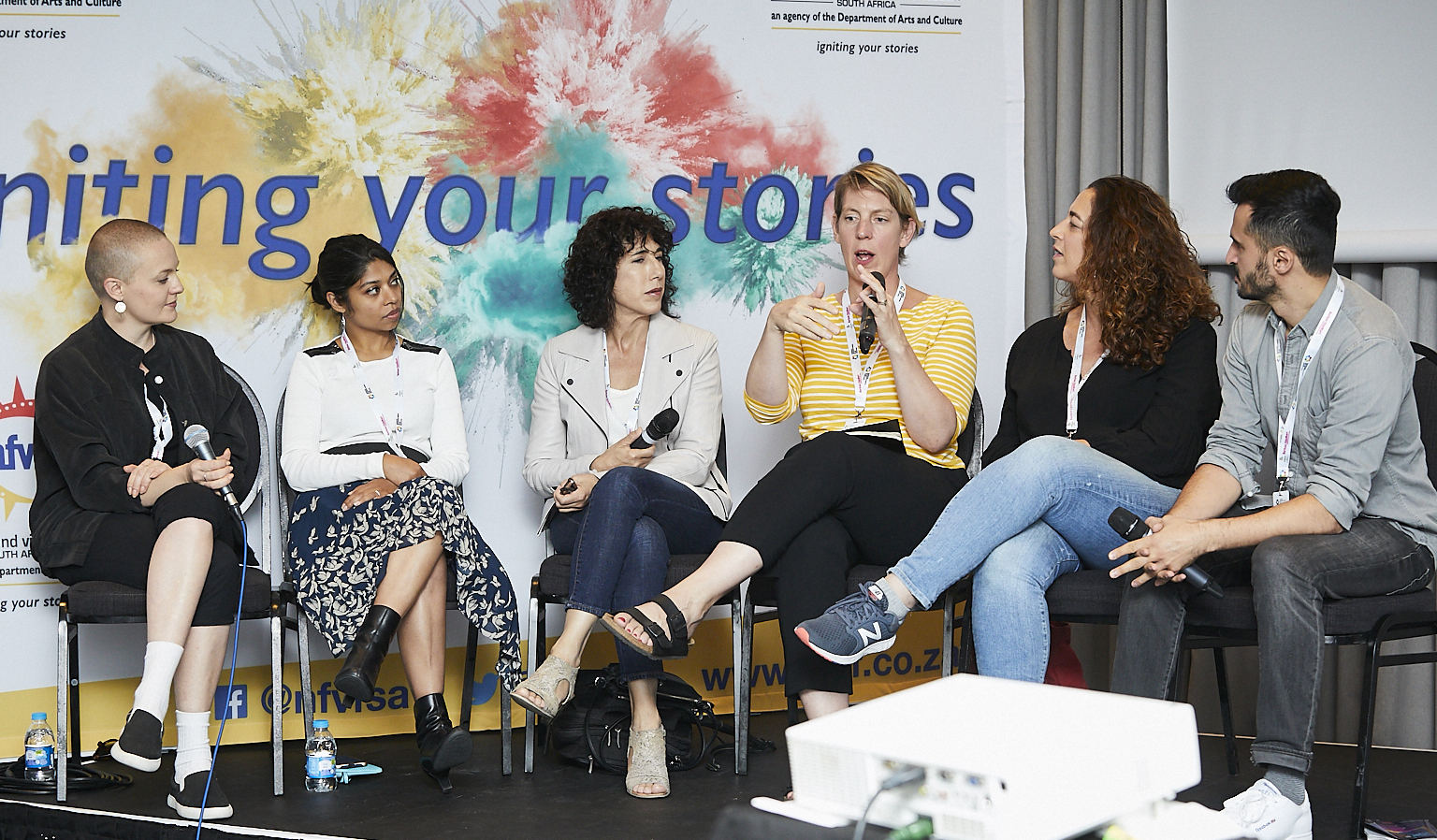Bizzers Talk Tech Revolution at Durban FilmMart
By Christopher Vourlias
LOS ANGELES (Variety.com) – DURBAN — The rapid technological innovations of recent years have all but amounted to a new industrial revolution in the realm of content creation, but for filmmakers, visual artists, and other creatives, the fundamental need for good storytelling remains the same.
During a lively panel session at the Durban FilmMart on July 22 entitled “The Medium is the Message,” filmmakers and industry professionals from across a range of media looked at how technological shifts have created a host of new possibilities and challenges for content creators.
Trying to put the radical changes into perspective, Sheffield Doc/Fest program manager Sarah Dawson pointed to examples from “previous moments in history, where there’s been a transition from one [dominant] medium to another.
“We think advancing technology somehow makes the previous technologies redundant,” she said. “When the film camera took over from the stills camera, instead of it making the still camera redundant, what it did was give it a new, specific identity and role and showed us what the value of that particular medium might be.”
“There just seem to be at this moment so many different ways in which we can both tell our stories and disseminate those stories,” said documentary director-producer Kristi Jacobson. “That is exciting, and also [something] I take as a responsibility: to keep telling stories that reflect narratives and stories that aren’t being told…in more mainstream places.”
“Technology is completely changing formats…[and] giving us different affordances for storytelling. I think that’s very exciting for creatives, as we start to find our way around the edges of those forms,” said Ingrid Kopp, a senior consultant for the Tribeca Film Institute and co-founder of Electric South, a Cape Town-based non-profit focused on developing the tools to produce and distribute new-media content coming out of Africa.
“It’s not [a question of] trying to expect one thing of another medium. When you start to understand that, I think it really liberates you in terms of the kinds of stories and experiences you can create in that medium. That, to me, is incredibly exciting.”
Filmmaker Jennifer Fox, who arrived in Durban for the African premiere of her Sundance sensation “The Tale,” noted, “For me, form comes out of story. You find the form that fits your story, and then you find the language that fits your story. These are really obvious concepts, but I think too often, we don’t respect them.”
“It’s about trying to navigate the ever-changing world…but not being pressured by it to retrofit your story into the form of the moment,” said Jacobson. The documentarian pointed to the current appetite for prestige TV series, which she described as a “gold rush,” as an example of how content creators are often pushed toward whatever medium is currently in demand.
“But there are so many different platforms, and those platforms also have funding,” she added. “It might be that it’s a 15-minute film, and I don’t need to turn it into a feature-length film to get it made or get it funded or tell that story.”
Kopp nevertheless put those opportunities in perspective. “The business model and the infrastructure don’t always catch up so quickly,” she said. “Creatively, these opportunities are all there, but to actually make a living can be very, very tricky.
She added, “I think it’s very hard to raise money for emerging media. The infrastructure and scaffolding that follow industries are much slower than some of these technological movements.”
Part of the problem stems from finding ways to monetize new forms of content: Disruptive technologies and groundbreaking distribution platforms tend to be better at reaching eyeballs than wallets. Even in traditional media, though, the challenge for many creatives is reaching the widest audience at a time when our attention spans are getting increasingly shorter, even as more and more content competes for our time.
“One of the reasons I went into fiction is I wanted those millions and millions and millions of viewers, and documentaries simply don’t reach that many people,” said Fox. “Audience is a big part of the choice of medium. It’s not the whole choice, but we should always be thinking, ‘What’s the reach?’”
At the same time, Fox conceded there was no simple answer to that question. “Sometimes the reach is ten people. And that’s legitimate.”
“We’re so obsessed with scale,” said Kopp, who pointed to how Silicon Valley tech firms emphasize growth at all costs. Recently, she’s begun experimenting with different ways to distribute new media content through pop-up cinemas, traveling exhibitions, and other “fixed run” models that are specific to a time and place, like a Broadway show. Instead of trying to reach mass audiences, she said, you’re looking to “change people in these moments.”
As animator Reza Memari put it: “If you can touch one person, and make them think about their life, then you’ve done your job.”
Pictured (l. to r.): Sarah Dawson, Nicole Mendes, Jennifer Fox, Ingrid Kopp, Kristi Jacobson, Reza Memari

